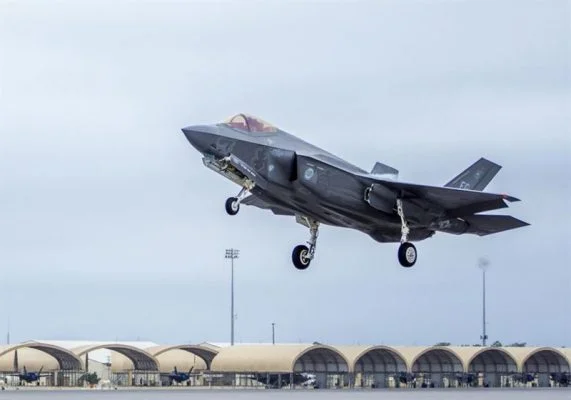Washington: The US Air Force under a Trump administration could choose to pursue a more advanced successor to the F-35 instead of the costly Next Generation Air Dominance platform to maintain air superiority, outgoing Air Force Secretary Frank Kendall said.
Kendall suggested alternative paths for the Air Force’s future combat fleet at a Centre for Strategic and International Studies event at the think tank’s Washington headquarters, in which he outlined a report on where the department needs to be in the next 25 years.
Authored by Kendall, the report, titled “The Department of the Air Force in 2050,” amounts to a sort of valedictory in the waning days of his leadership of the department — and a warning of the threats it could face in decades to come.
“The [Air Force and Space Force] missions don’t fundamentally change [by then], but both services need to go through a transformation” by 2050, Kendall said.
The Air Force will need to procure and maintain the Sentinel intercontinental ballistic missile and B-21 Raider stealth bomber as the core of its portion of the nation’s nuclear triad, Kendall said. It must also accelerate its shift to standoff capabilities that can be launched outside an enemy’s territory, as well as mature survivable stand-in capabilities such as Next Generation Air Dominance, or NGAD, drone wingmen known as collaborative combat aircraft, or CCA, and a next-generation refueling tanker.
Kendall’s report largely calls for continuing the Space Force’s current mission — just at a larger scale and with new architectures and tactics. It predicts growth in the number of satellites in orbit and in the size of the force that will operate them. While today, there are 10,000 guardians in the Space Force, he suggested that by 2050, there will be “multiples of this number.”
China will likely remain the “pacing challenge” for the US and its allies, Kendall said. He predicted China will continue to develop militarily and be able to challenge the US and its allies not only in the Indo-Pacific region but worldwide. Russia will also remain hostile and a “serious threat,” he said, but its economic weaknesses could hinder its military ambitions.
But many “wildcards” exist that make it hard to predict 25 years in the future, Kendall said, such as unforeseen technological advances, a potential nuclear exchange between nations or a Chinese attack on Taiwan. And the department needs to make several decisions to prepare for the possibility of a very different future.
Raksha Anirveda's editorial desk team brings in the collective experience of creative professionals - a fine mix of senior copy editors, writers, proofreaders and designers. Working as a team, they continuously create, manage, and curate content to sustain the magazine's profile and reputation in line with market trends and achieve magazine's goal.





